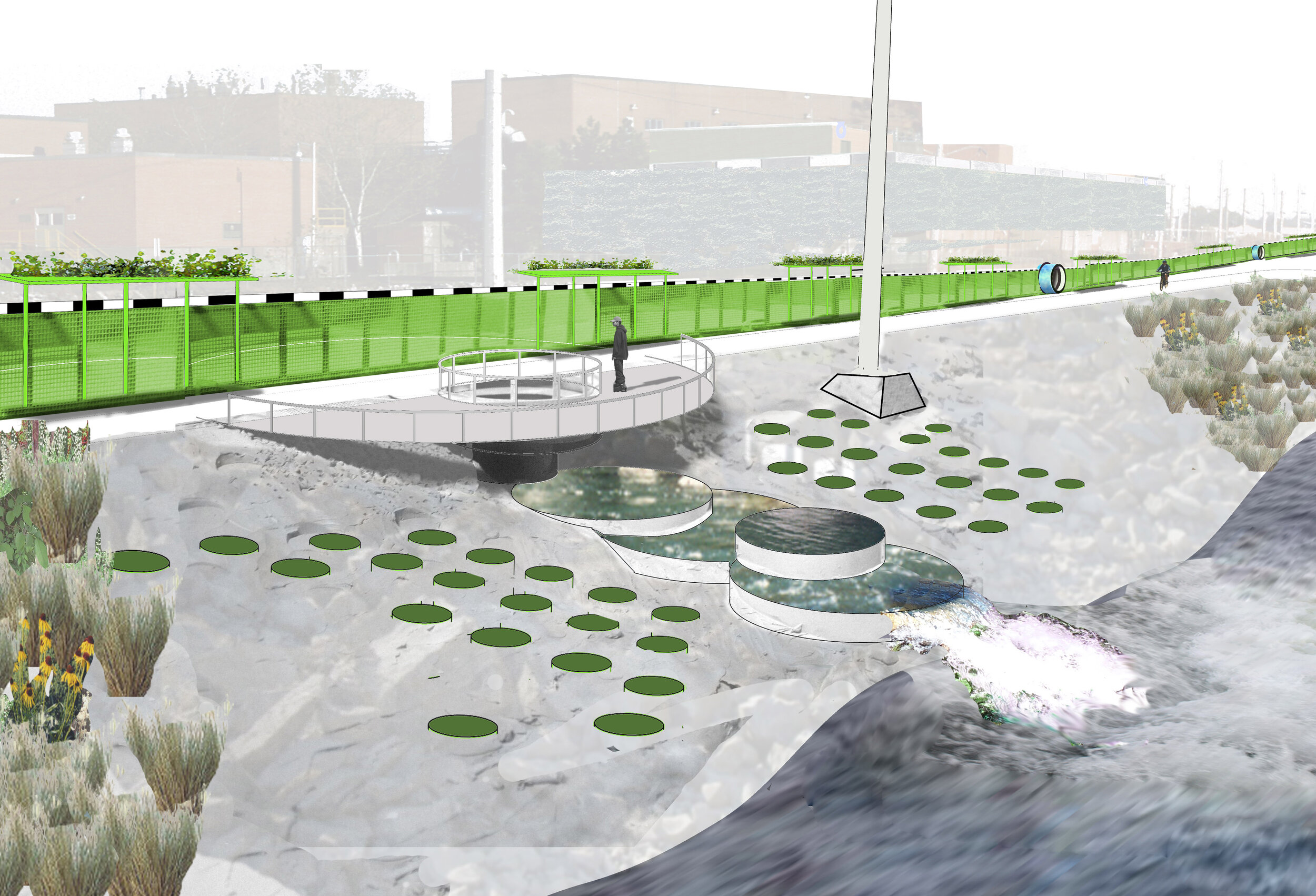The Arlington County Water Pollution Plant Master Plan, 2003 - 2005
proposal
The Arlington County Water Pollution Plant Master Plan (ACWPCP) proposes to make visible the invisible, to connect the daily lives of Arlington’s inhabitants to the Chesapeake Bay, where their sewage flows.
The plant itself, a massive 35-acre site, is a major feature in the landscape. The proposal contains two main objectives: 1) to educate the public about the sewage treatment, demystifying the process with a black and white line extending throughout the plant grounds; and 2) to create a full-scale diagram that leads visitors visually and physically from one step in the process to the next. The steps in the water treatment would be marked by large numbers with corresponding kiosks whose forms and sizes echo that of the actual pipes.
Miss envisions using the “in between” spaces of the plant – the surrounding walkways, fences, and even the plant buildings – as places of engagement and recreation, not unlike those envisioned in Moving Perimeter. She has designed an ecosystem that utilizes the dead spaces created by the treatment plant to then support the plant, adapting roofs, grounds, and roadways with plant screens that assist in cooling in the summer and insulating in the winter, and that collect clean rainwater runoff. Rain gardens also collect water. The living surfaces are not limited to plant life: permeable surfaces, such as grass, gravel, and crushed oyster shells help stormwater management. Solar panels that encircle the perimeter provide supplemental power. Miss uses the design to support the function of the structure.
It takes more than placards and photographs to understand our environment and to strengthen our relationship to it. The process of learning must be integrated in our daily lives, in the infrastructure that sustains contemporary life, in order for our responsibilities for the future to be fully embraced.




